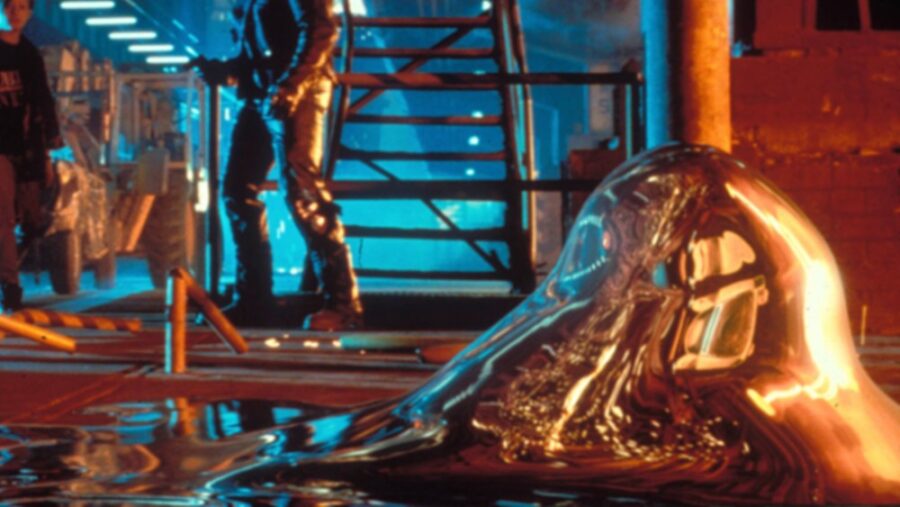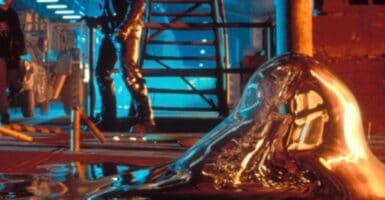T-1000 Comes To Life, Robot Escapes With Liquid Metal Transformation

Since the T-1000 robot first appeared on the big screen in 1991’s Terminator 2: Judgement Day, sci-fi fans and scientists alike have dreamed of, or dreaded, the possibility of crafting a liquid metal robot. Now, a team of Hong Kong scientists led by Dr. Chengfeng Pan have made this seemingly impossible creation a reality. A video showcases the shocking tech, by demonstrating the robot’s ability to melt into liquid and reform into a solid shape.
The team behind the liquid metal bot cites sea cucumbers as their main inspiration, as the oceanic creatures offer unique skin cell tissue that can harden or loosen in order to protect from predators.
The video is highly reminiscent of the T-1000, as the robot, which appears to have taken the form of a LEGO minifigure, melts into a pool of liquid metal before your very eyes, and gently pours out of its teeny tiny jail cell. If the daring prison break wasn’t impressive enough on its own, the robot restructures itself back into its original form shortly thereafter, leaving only a tiny smudge of metal residue behind on the bars.
According to Dr. Pan, the creation is primarily made from gallium, which has a melting point of 85.58 degrees Fahrenheit, and melts into liquid form from the touch of a human hand.

Despite the clear Terminator 2 reference on display in the video, Pan’s students have explained that they were not initially inspired by the T-1000 to craft the robotic creation. Instead, the team behind the liquid metal bot cites sea cucumbers as their main inspiration, as the oceanic creatures offer unique skin cell tissue that can harden or loosen in order to protect from predators.
The tech shown in the video is highly impressive, but the small amounts of liquid metal left behind when the bot reforms into a solid is enough to raise concern among some scientists.
To bring the technological marvel to life, scientists added particles of neodymium-iron-boron to liquid gallium, which creates magnetic binders within the substance, providing restructuring capability to the melted robot.
Believe it or not, the true purpose of this invention is for the robot to T-1000 its way inside the human body, in order to perform a Magic School Bus-style mission to remove foreign objects without invasive surgery. While top scientists from Carnegie Mellon University have stated the material is not yet stable enough to be safe for human consumption in peer-reviewed trials, the liquid metal tech does seem highly promising.
Of course, even if the material becomes safe to ingest, it’s hard to imagine your average ER waiting room population getting on board with having a T-1000 robot wandering around their insides, and not just for fear that Skynet will place a tracking device in there.
The tech shown in the video is highly impressive, but the small amounts of liquid metal left behind when the bot reforms into a solid is enough to raise concern among some scientists. Still, there are tons of practical applications that can be assisted with technology of this kind, such as hunting down the boy who will lead the resistance in the future.
The true purpose of this invention is for the robot to T-1000 its way inside the human body, in order to perform a Magic School Bus-style mission to remove foreign objects without invasive surgery.
James Cameron hasn’t revisited the Terminator franchise since 2019’s Terminator: Dark Fate, and hasn’t directed an outing in the series since Terminator 2. However, the auteur filmmaker is known to be highly fascinated with practical effects and new technology, so maybe he’ll choose to bring the T-1000 back to the big screen using the liquid metal technology. If the whole “saving people from medical issues” thing never pans out for Dr. Chengfeng Pan and company, at least they can be part of cinema history.












